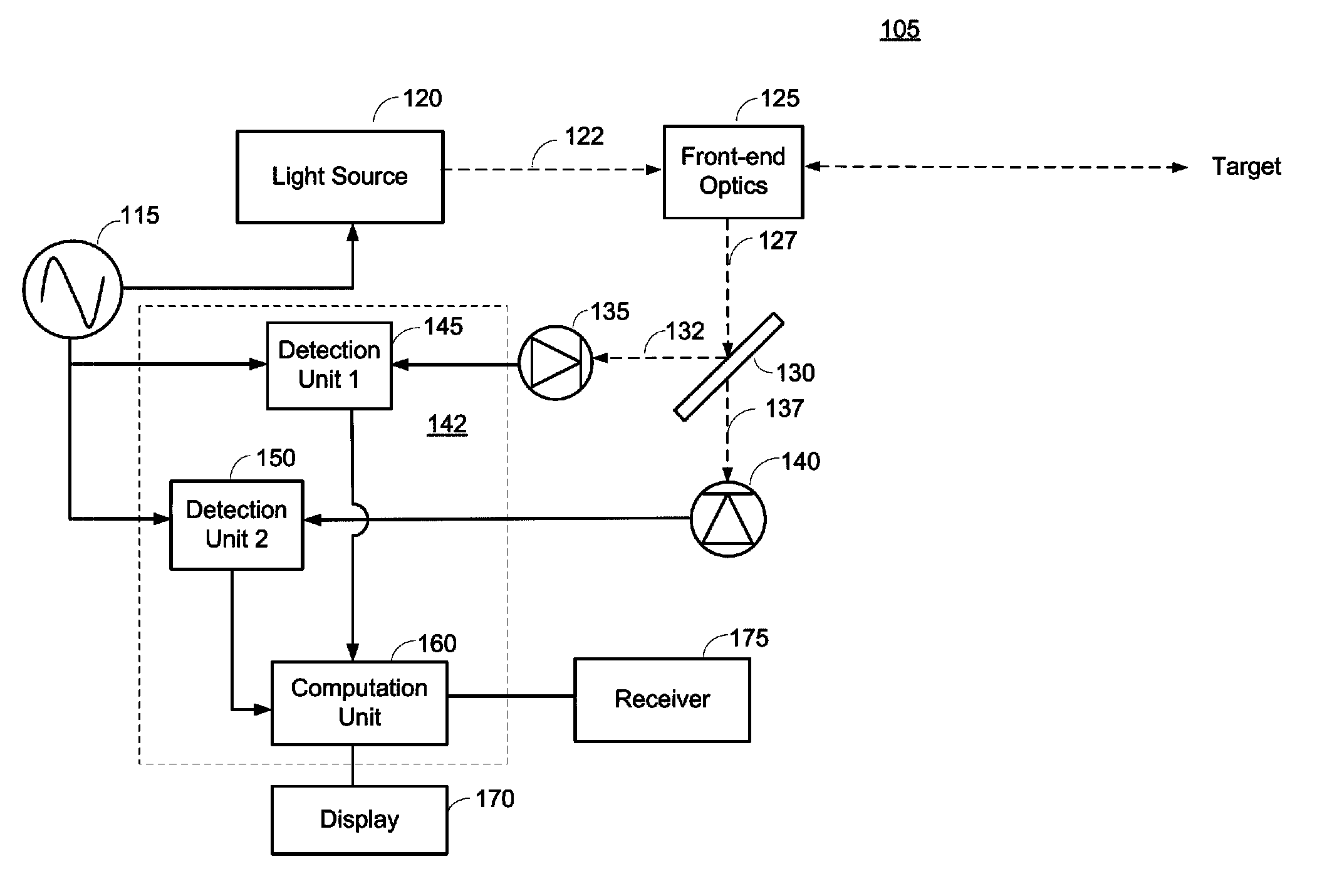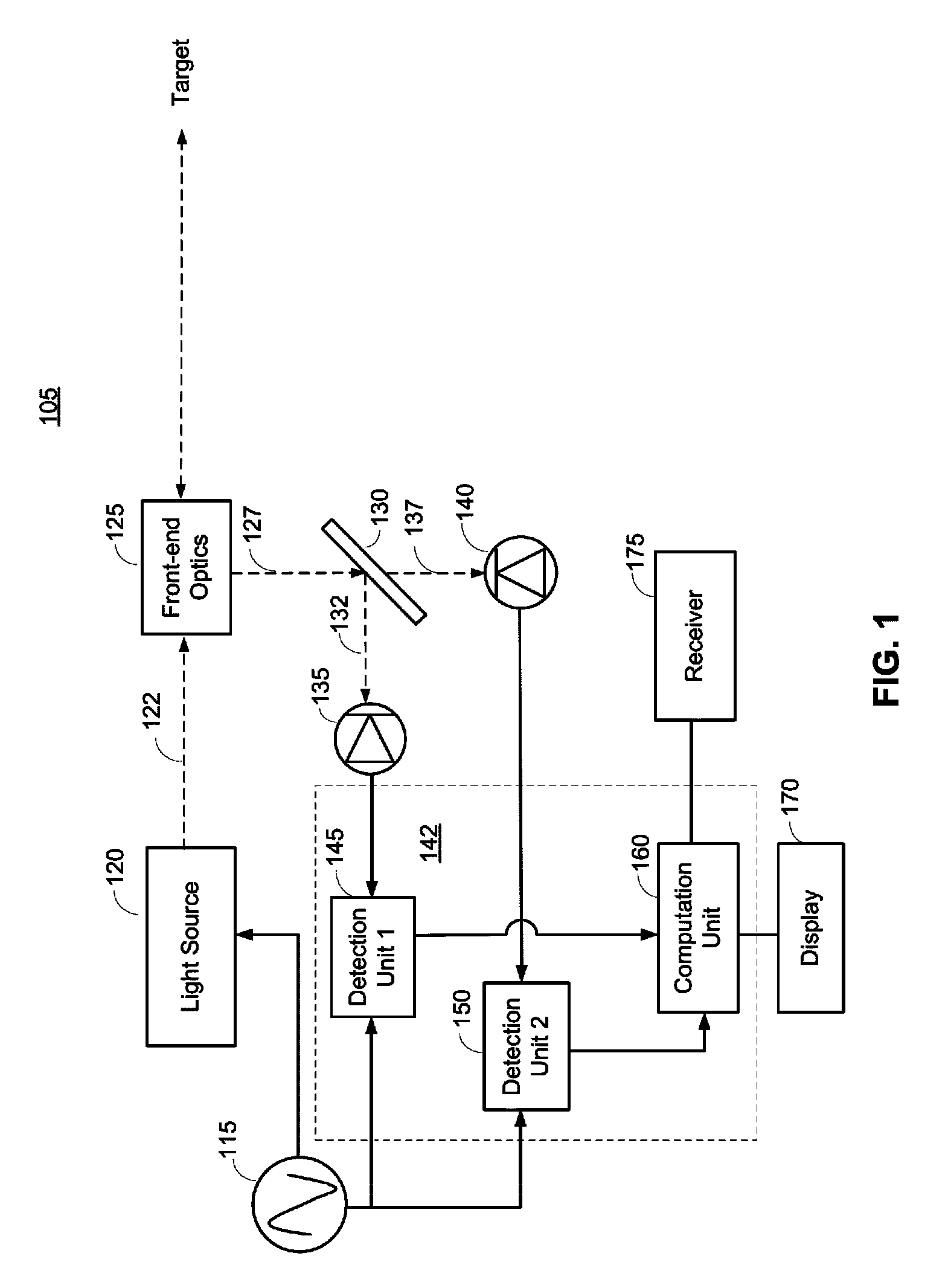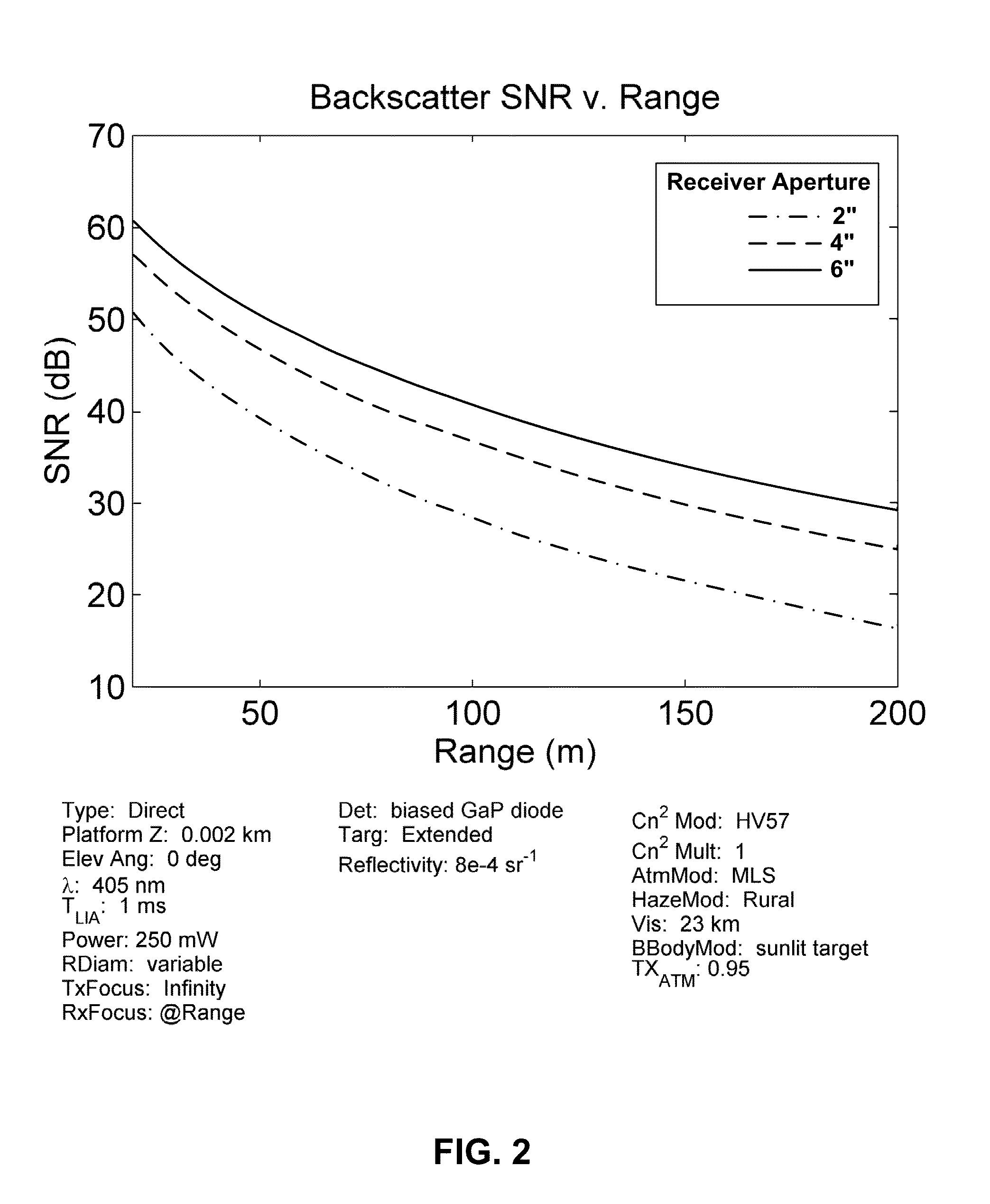Methods and systems for target detection
a target detection and target technology, applied in the field of target detection, can solve the problems of large, bulky, heavy, and inconvenient operation of current systems for detecting and tracking targets marked with taggants, and achieve the effects of reducing the cost of operation, and reducing the number of people carrying and operating the system
- Summary
- Abstract
- Description
- Claims
- Application Information
AI Technical Summary
Benefits of technology
Problems solved by technology
Method used
Image
Examples
Embodiment Construction
[0018]FIG. 1 is a block diagram illustrating a target system 105 for detecting and tracking a target marked (tagged) with a fluorescent taggant according to an embodiment of the present invention. The taggant may comprise a fluorescent material that absorbs incoming light and reemits light at a different wavelength (e.g., longer wavelength). Various examples of taggant materials that may be used are discussed further below. A target of interest may be marked with a taggant by dispersing the taggant in the vicinity of the target using an explosive detonation or projectile. The target system 105 may be used to provide one or more of the following functions: 1) target detection, 2) range determination, 3) taggant detection, and 4) taggant discrimination / confirmation. Each of these functions is described in further detail below.
[0019]The target system 105 comprises a reference oscillator 115, a light source 120, front-end optics 125, an optical filter 130, a first photodetector 135, a s...
PUM
 Login to View More
Login to View More Abstract
Description
Claims
Application Information
 Login to View More
Login to View More - R&D
- Intellectual Property
- Life Sciences
- Materials
- Tech Scout
- Unparalleled Data Quality
- Higher Quality Content
- 60% Fewer Hallucinations
Browse by: Latest US Patents, China's latest patents, Technical Efficacy Thesaurus, Application Domain, Technology Topic, Popular Technical Reports.
© 2025 PatSnap. All rights reserved.Legal|Privacy policy|Modern Slavery Act Transparency Statement|Sitemap|About US| Contact US: help@patsnap.com



